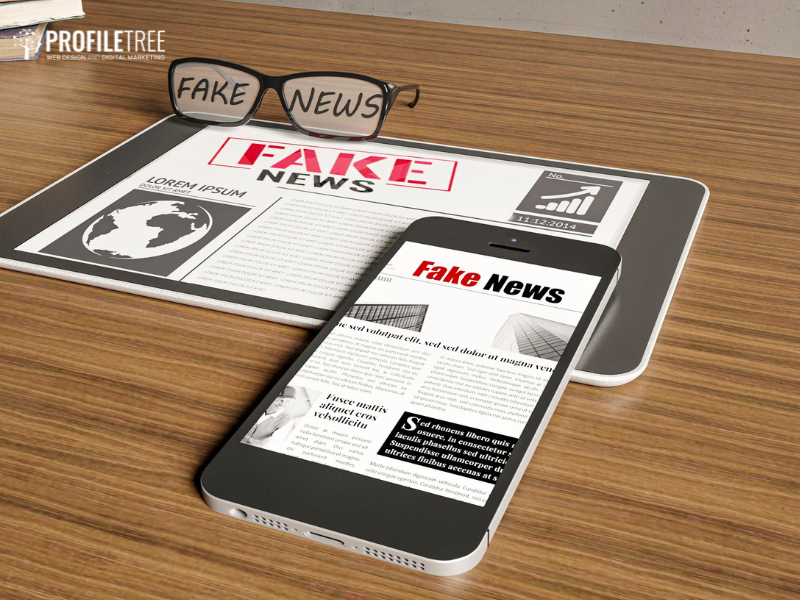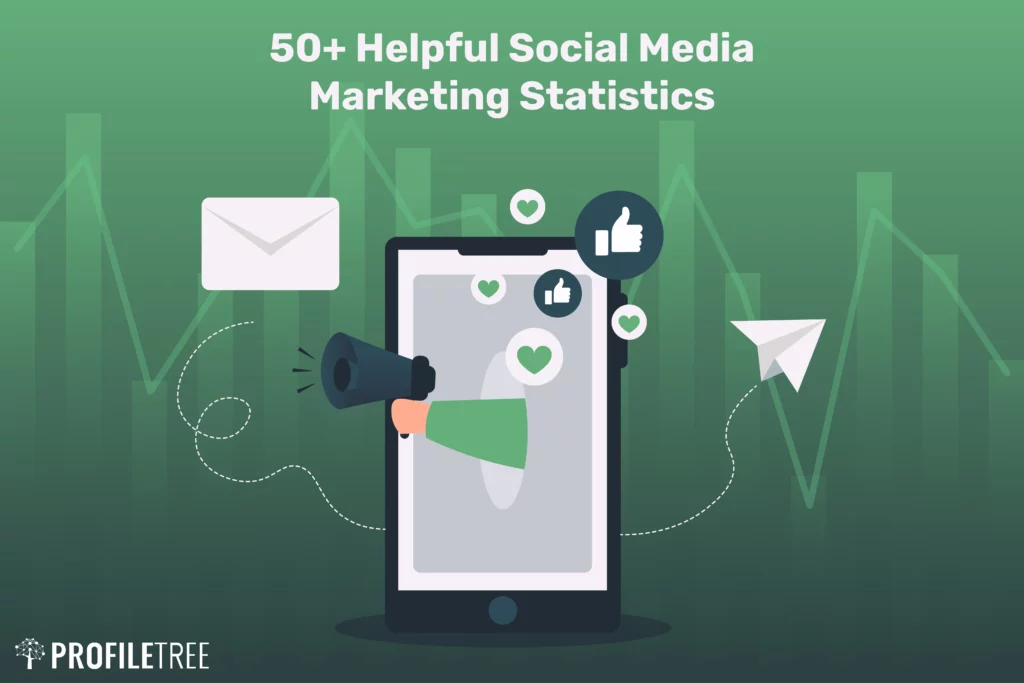Welcome to the digital era, where social media has woven itself into the very fabric of our existence, revolutionising our modes of communication, information acquisition, and idea dissemination. Amidst this vast connectivity landscape, however, lies a sinister underbelly: the proliferation of misinformation on social media.
Social media has eased various aspects of our lives, but with such freedom comes more than a few challenges. In this age of boundless possibilities, falsehoods and fabricated news stories effortlessly permeate these platforms, presenting formidable obstacles for individuals, communities, and enterprises alike.
Social media’s unique characteristics make it an ideal breeding ground for the rapid dissemination of any kind of information, and fake news is no exception. With millions of users sharing content at lightning speed, spreading misinformation on social media can happen within seconds, reaching a vast audience before fact-checkers can intervene.
The very nature of social media, with its emphasis on viral content, amplifies the spread of falsehoods, often overshadowing accurate information. Join us as we delve into the intricate complexities of this misinformation epidemic, exploring its far-reaching implications and seeking innovative solutions to restore truth and trust in the digital realm.
The Definition of Misinformation
Misinformation on social media refers to the dissemination of false or misleading information through online platforms. It encompasses a wide range of inaccuracies, including fabricated news stories, distorted facts, manipulated images or videos, misleading quotes, and rumours.

Misinformation on social media can be spread intentionally with the aim of deception or unintentionally through the sharing of inaccurate information without proper verification. It often exploits the fast-paced nature of social media, where information can quickly reach a vast audience, potentially leading to widespread confusion, misinterpretations, and the perpetuation of false narratives.
The Difference Between Misinformation and Disinformation
While misinformation and disinformation are often used interchangeably, they have distinct differences. Misinformation refers to the dissemination of false or inaccurate information, often unintentionally.
On the other hand, disinformation includes the intentional spread of false information in order to deceive and manipulate public opinion. Disinformation campaigns are often orchestrated by individuals or groups with specific agendas, aiming to sow discord, create confusion, or advance their own interests.
Various Types of Misinformation on Social Media

Misinformation on social media has become an undeniable challenge in today’s digital landscape. As we navigate the vast breadth of online platforms, it is essential to understand the various types of misinformation that can propagate and infiltrate our lives. Understanding these different types of misinformation on social media is crucial in navigating the digital landscape responsibly.
Fact-checking before sharing and fostering a culture of digital literacy by critically evaluating information can strongly resist the spread of misinformation on social media and ensure a more informed and trustworthy online environment. From deliberate deception to inadvertent sharing of inaccurate information, let us delve into the intricacies of these different types and their potential consequences.
False Information
This type of misinformation on social media is deliberately forged and designed with the intention to deceive. It can take the form of fake news articles, manipulated images, or misleading quotes. False information often exploits people’s emotions, preys on their fears, or fuels existing biases. The consequences of incorrect information can be far-reaching, leading to misinformation-driven narratives and misguided decisions.
Misleading Context
Sometimes, accurate information is presented in a misleading context, distorting its true meaning. This form of misinformation capitalises on people’s tendency to skim through headlines or rely on incomplete information. Social media users can inadvertently spread misinformation, perpetuating false narratives and misinterpretations by selectively presenting facts or omitting crucial details.
Satire and Parody
Satirical content is a staple of social media platforms, providing comic relief and critique. However, the line between satire and misinformation can blur, leading to audience confusion. Satirical posts can be mistaken for genuine news when taken out of context or shared without proper attribution. The challenge lies in distinguishing satire from factual information to prevent the unintentional spread of misinformation.
Rumours and Urban Legends
Social media’s rapid information-sharing capabilities can amplify rumours and urban legends, leading to their widespread dissemination. These unverified stories often tap into people’s curiosity and desire for novelty. From celebrity death hoaxes to urban legends about product dangers, these rumours can spread like wildfire, causing panic, confusion, and unnecessary alarm.
Clickbait
Misleading headlines or sensationalised content designed to grab attention are prevalent on social media. Clickbait often relies on exaggerated claims or provocative statements to entice users to click and engage. While not inherently false, clickbait can mislead users by creating false expectations or oversimplifying complex issues. Falling prey to clickbait can perpetuate the cycle of misinformation, as users share content without critically assessing its accuracy.
Echo Chambers
The algorithms of social media are designed to curate content based on user’s preferences, creating personalised echo chambers. Within these echo chambers, like-minded users are exposed to a limited range of perspectives, strengthening their existing beliefs and biases. This can result in spreading misinformation as users are less likely to come across alternative viewpoints or fact-check information that aligns with their preconceived notions.
Factors that Contribute to Misinformation Spreading

Numerous factors contribute to the rampant spread of misinformation on social media platforms. First and foremost is the need for more gatekeepers and editorial oversight. Anyone can create and share content without stringent fact-checking, blurring the lines between truth and falsehood.
The algorithms prioritising engagement and virality further exacerbate the problem, as sensationalised or provocative content garners more attention. The echo chamber effect, where users follow like-minded individuals and sources, also creates an insular environment that reinforces existing beliefs and inhibits critical thinking.
Key Statistics Highlighting the Effect of Misinformation on Social Media
- False news spreads six times faster than accurate news on social media.
- 64% of Americans say that fabricated information resulted in “a great deal” of confusion about basic facts of current events.
- 58% of respondents worldwide are concerned about fake news and misinformation.
- False information reaches 1,500 people six times quicker than accurate information.
- The World Economic Forum identified misinformation as one of the top ten risks to global stability.
- 86% of internet users globally have encountered fake news.
- Political disinformation reached over 70 countries, posing threats to democracies worldwide.
- Stories with false news are 70% more likely to be retweeted than true stories.
- The Reuters Institute for the Study of Journalism reported that social media is the least trusted news source globally.
- The spread of fake news and information about vaccines on social media has led to a decline in vaccination rates, posing risks to public health.
- 57% of people believe that social media platforms must do more to combat misinformation and fake news.
How Does Misinformation Affect Younger People?
Younger age groups, who are highly active on social media, are particularly vulnerable to the effects of misinformation. The constant exposure to false information can shape their perceptions, beliefs, and decision-making processes. Studies have shown that misinformation can lead to a reduction in critical thinking skills as well as the inability to trust reliable sources of information.
Moreover, young people may become victims of online scams, cyberbullying, or radicalisation due to the influence of misleading content. Recognising the unique risks young individuals face, promoting media literacy and critical thinking skills among this demographic becomes crucial.
Strategies Social Media Companies Should Implement to Combat Misinformation
Since the spread of misinformation on social media can impose threats on different aspects of life, it’s these companies’ role to fight this alleged virus. Social media companies can contribute to creating a safer online environment by adopting various strategies where reliable information prevails, and misinformation is effectively mitigated.
Combatting misinformation requires a multi-faceted approach involving social media companies, fact-checkers, and users. Here are some strategies that social media companies can implement to tackle the spread of misinformation:
Enhanced Fact-Checking
Social media platforms can invest in robust fact-checking mechanisms by partnering with credible organisations. They can prioritise content verification before it is allowed to spread widely. Promptly labelling or flagging false information can help users identify misleading content and make informed decisions.
Algorithmic Changes
Platforms can modify their algorithms to prioritise accurate and reliable information over sensationalised or misleading content. By promoting content from trusted sources and reducing the visibility and reach of false information, social media companies can help counter the virality of misinformation.
Warning Labels and Disclaimers
When false or misleading information is identified, social media platforms can display warning labels or disclaimers alongside such content. These labels can provide users additional context, directing them to fact-checked information or credible sources.
Promoting Verified Sources
Social media companies can actively promote verified sources within their platforms, such as reputable news organisations and fact-checking agencies. By highlighting trustworthy information, they can steer users towards reliable sources and reduce their reliance on dubious content.
User Education and Media Literacy
Social media companies can have a vital role in promoting media literacy among their users. They can develop educational campaigns, tutorials, and resources to help users identify and critically assess misinformation. Providing tools and resources for users to report false information can also aid in the detection and online content removal.
Collaborations and Partnerships
Collaborating with external organisations, such as academic institutions, fact-checking agencies, and research centres, can enhance the effectiveness of combating misinformation. Social media companies can support research efforts, share data, and collaborate on developing innovative solutions to address the challenges posed by misinformation.
Transparency and Accountability
Publishing reports on a regular basis on the actions taken against false information and providing insights into algorithmic changes can enhance trust. Thus, social media platforms should be more transparent about their content policies, enforcement actions, and efforts to combat misinformation.
Reducing Financial Incentives
Social media companies can actively identify and reduce the financial incentives that motivate the creation and dissemination of misinformation. By cracking down on ad networks that promote deceptive content or limiting the monetisation potential of misinformation, platforms can discourage the spread of false information.
Community Engagement and Feedback
Platforms can foster a sense of community ownership by actively seeking user feedback and involving users in the moderation process. Encouraging users to report false information, rewarding responsible behaviour, and soliciting input on platform policies can create a more proactive approach to combating misinformation.
Continuous Monitoring and Adaptation
Misinformation tactics evolve, so social media companies need to monitor emerging trends and adapt their strategies accordingly continuously. Staying proactive and responsive to new challenges is crucial to combat the ever-changing misinformation landscape effectively.
The prevalence of misinformation on social media poses significant challenges to individuals and societies, as well as businesses relying on accurate information. Implementing robust fact-checking mechanisms, promoting media literacy, and encouraging critical thinking skills are essential steps in mitigating the impact of misinformation.


